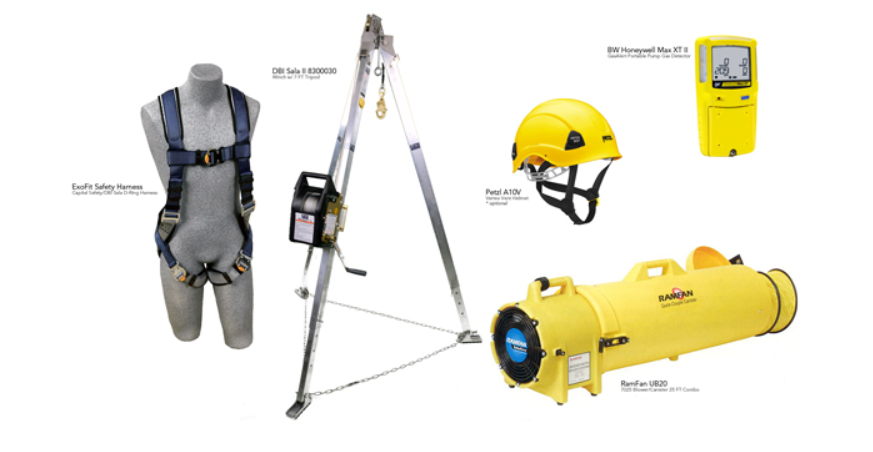Confined space entry is tricky business. There is a ton of required equipment, training, testing, and entry protocol. With so much to know, we've found it handy to offer several different complete confined space entry kits. However the fundamental starting point for all confined space entry is a solid overhead attachment point. In many instances, since there is no existing overhead attachment point, collapsible aluminum tripods are often used to create one.
Because we offer several tripods here at PK Safety, we thought a quick explanation of the differences between our most popular tripod kits would be helpful for folks who are looking to buy confined space entry equipment. Whether the work to be completed is for a private contractor or a city utility, confined space entry has lots of moving parts.
The first thing most potential buyers consider is cost. It's natural. You want the best you can get for the money you are about to spend. We get it. For a tripod, winch, pulleys, and winch bracket the basic Protecta Tripod Kit currently costs around $2200.
If you're just trying to take care of compliance issues, or this is a system you will be using very infrequently (like once), you can stop here. This system is a great deal, it meets the OSHA single overhead anchorage point requirement for a 5,000 lb. vertical load rating, and the rest of the requirements as well. You are covered for a wide range of confined space entry work. It's all there.
However there are a few things that you're going to get for the approximately $700 more that you'd pay for the more robust DBI-SALA Confined Space Tripod and Winch 8300030. First off, while both of these tripods are made of lightweight aluminum, the DBI-SALA 8000000 tripod, which is part of the more expensive system, is clearly a heavier-duty construction. If you see them and touch them side by side, the differences are very apparent.
While it would seem pretty obvious we want to sell the more expensive model, it really doesn't matter than much to us. You're the one who will have to live with it. And while this seems like the perfect time for me to write something vaguely ominous about "when something really goes wrong" and having the best equipment, I'm not going to do it. The money you spend for the updated kit buys features. In our opinion the better kit is far superior and the extra cost translates into ease of operation and reduced set-up time.
Here are a couple of examples. We've set these tripods up more than most people. The 8300030 kit has a bracket the fairly heavy winch attaches to with a detent pin. It's a smart, quick system that clicks together with minimum effort with the tripod up and in place. The more basic Protecta kit also attaches the winch with detent pins, but in a much more cumbersome manner. In fact, it's almost impossible to do with the tripod set up. You'll need to lay the tripod on the ground, then attach the winch, and then try to set up the tripod with the 24 lb. Protecta AK200 attached. It's not much fun.
The winch itself is a major component of a confined space entry system. It's the work horse. The Salalift II which comes with the more expensive kit makes your life easy. Putting this winch into free wheeling mode is quick and the action is smooth. The Protecta winch is more like a boat trailer winch. It's basic. It is man-rated to 310 lbs. and it has a 4:1 advantage for lifting. But if you're using it to raise and lower equipment, it's going to frustrate you pretty quickly.
We hope this clears up some of the differences between these two kits. Our final analysis is that if you are using a confined space entry tripod regularltripod-y, the time spent setting up and operating the system justifies spending the extra money because it will pay for itself in time saved and lower blood pressure levels for the workers involved. If you just need compliance for infrequent confined space work, the less expensive kit will work fine.
If you still have questions about tripods for confined space entry, feel free to contact us online or on the phone at 1-800-829-9580.

